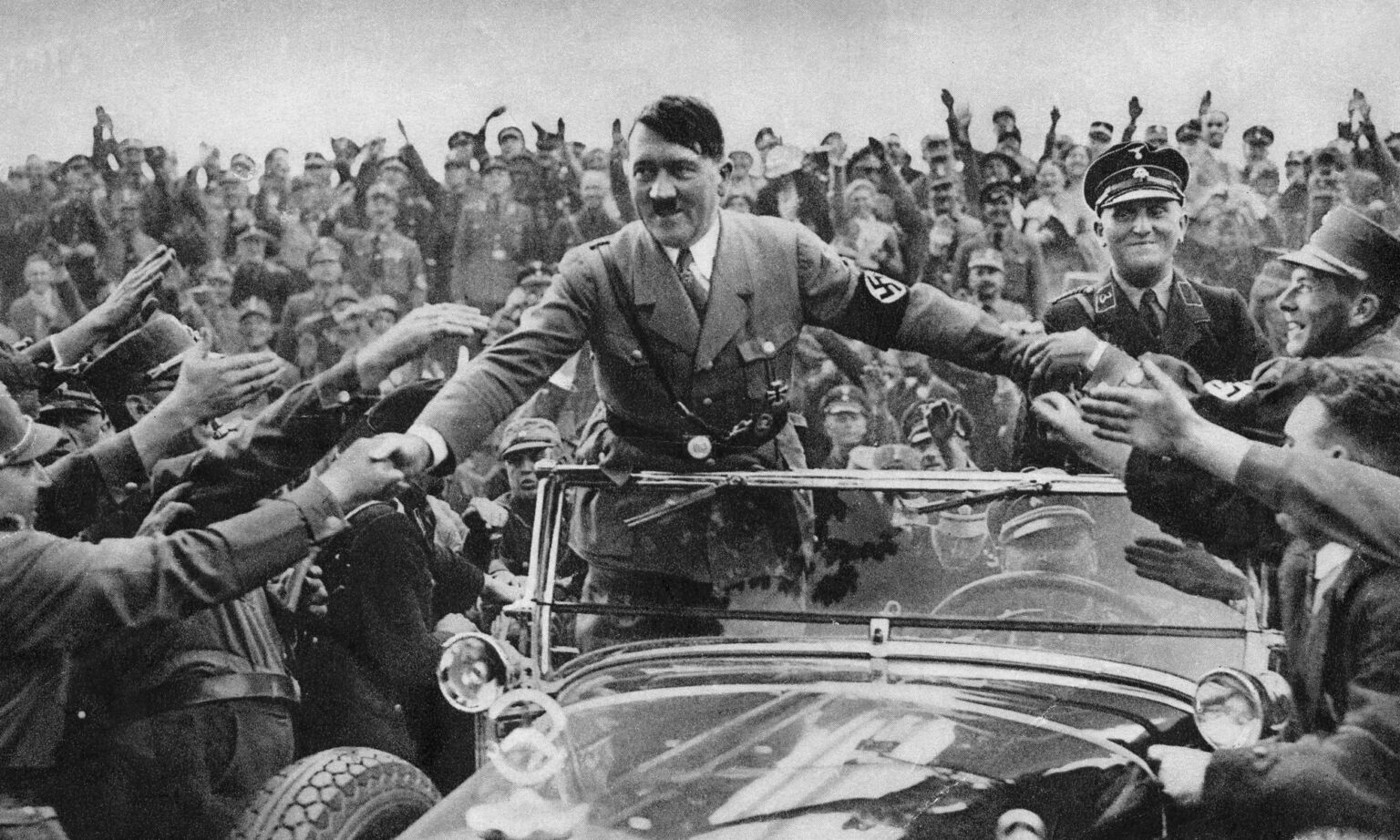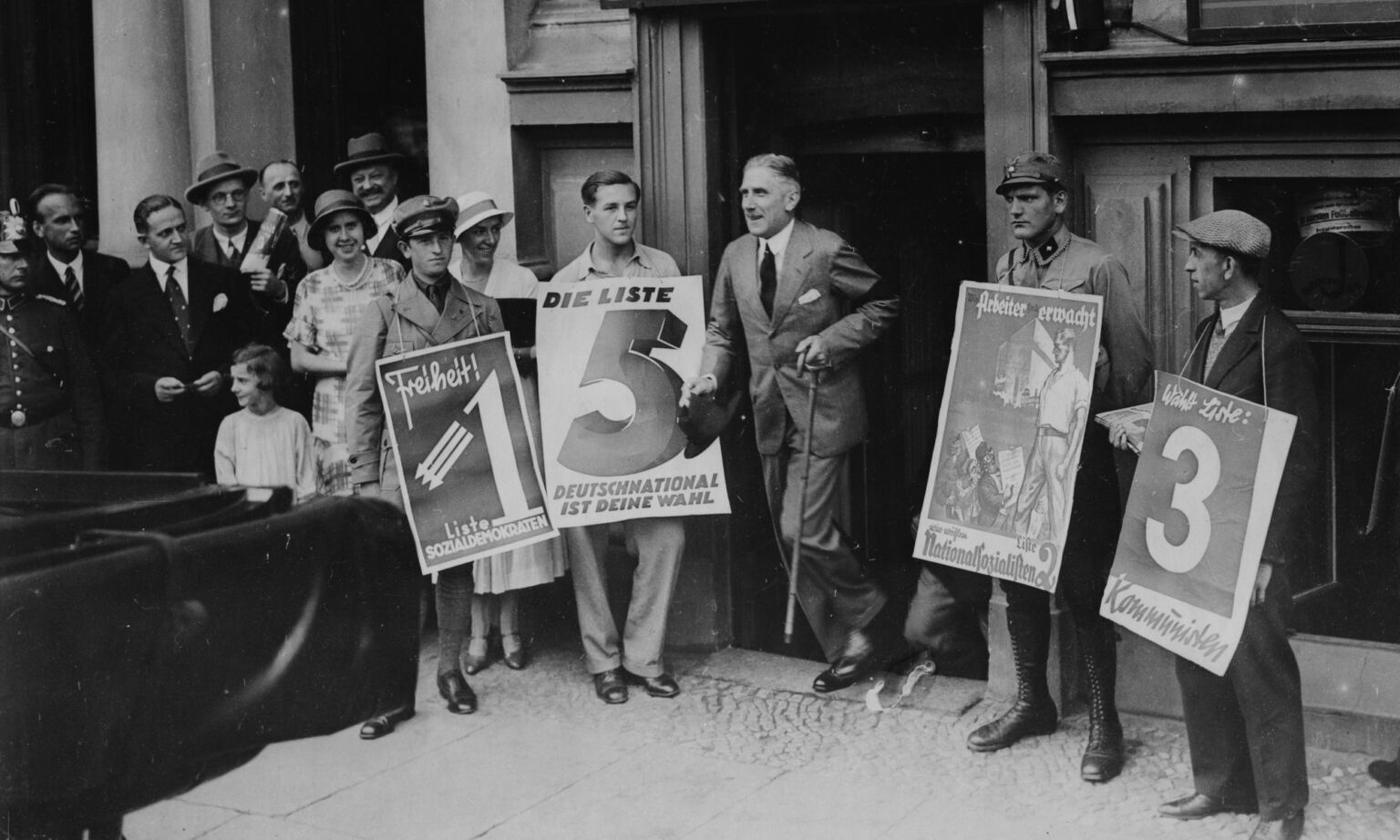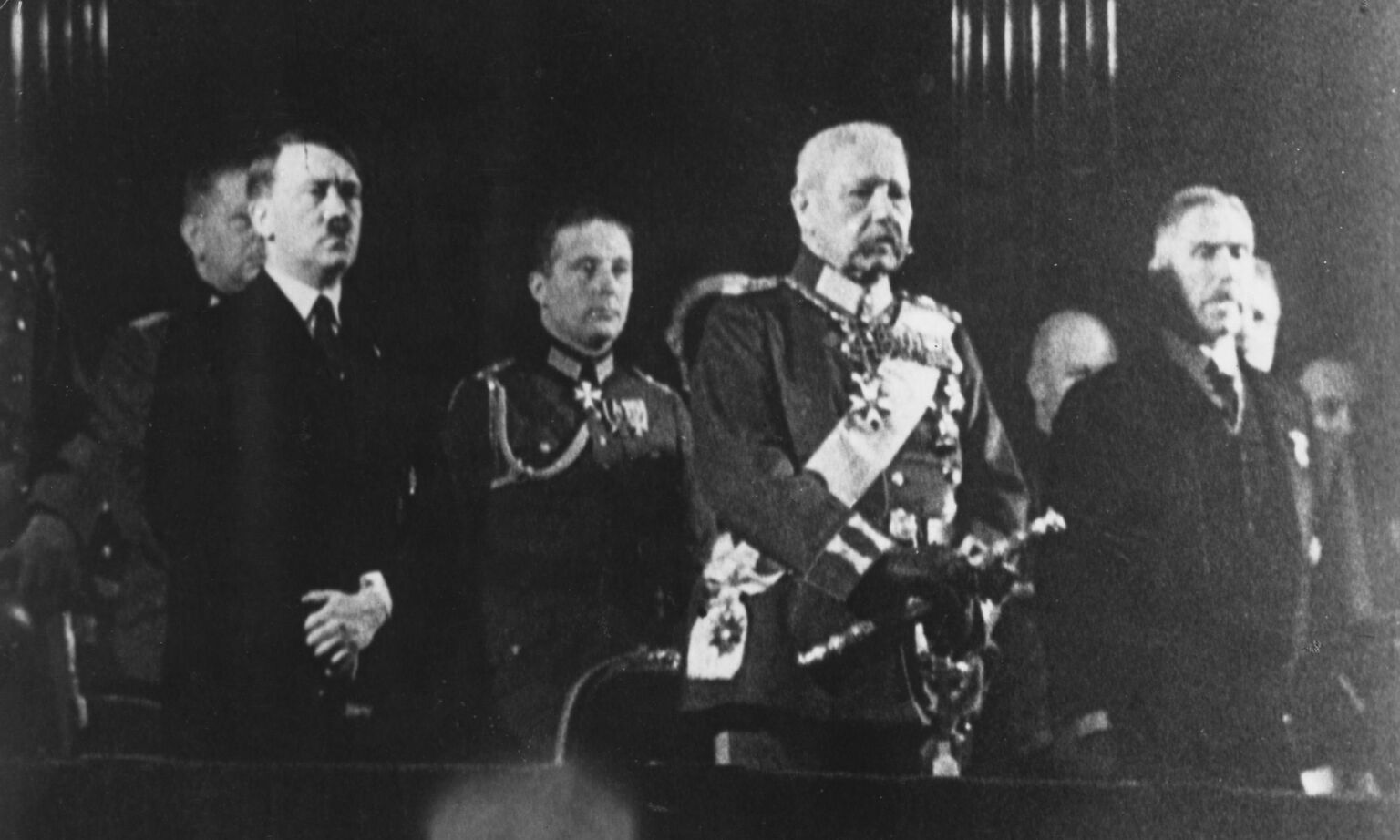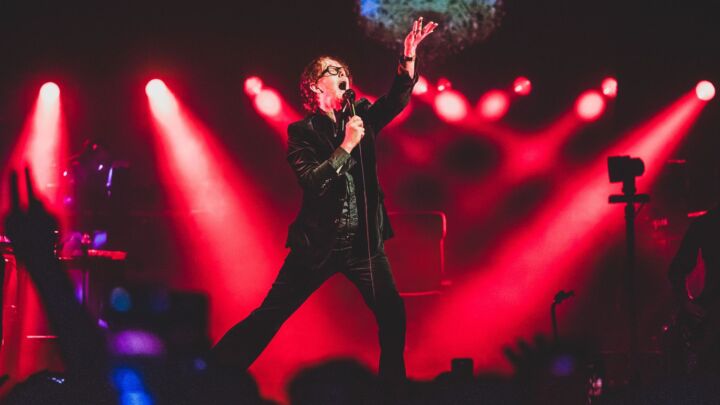
Long-read
The use and abuse of the rise of the Nazis
There was nothing ‘democratic’ about Hitler’s seizure of power.
Want to read spiked ad-free? Become a spiked supporter.
Ninety years after the Nazis came to power in Germany, fascism is not remotely on the rise in any real sense today. There are no militarised groups of brown-shirted men fighting street battles with Communists. And there are certainly no totalitarian dictators on the brink of storming the chanceries of Europe.
Yet, at the same time, the spectre of Nazism looms larger than ever in the imagination of today’s elites. They see analogies with the 1930s in every populist, democratic challenge to the status quo. Anti-Nazism has effectively become the prism through which they express their anti-democratic prejudices.
Demonising the people in this way is a familiar tactic. In the aftermath of the French Revolution, conservatives like Edmund Burke painted those in Britain demanding the same rights as their French counterparts as the ‘swinish multitude’. Likewise, today’s establishment ideologues present any democratic challenge to the political order as a proto-fascist multitude.
The myth of this ever-present fascist threat is especially important to the European Union. Indeed, the EU is premised on the idea that untrammelled public politics leads to Nazism and war. It assumes that popular passions, unleashed by national electorates, lead to the rise of totalitarianism or aggressive state nationalism unless they are subject to some kind of supranational political restraint. This is where the EU and other international institutions come in – they exist to calm and restrain the political passions of the European populace.
The demonisation of the people
Ironically, this view of the people is not dissimilar to actual fascists’ own view of the people – as an irrational mass, whose dark passions can be moulded and unleashed for political ends. This view had its origins in a distinct counter-Enlightenment tradition, which developed during the 19th century in opposition to democracy and universalism. Its proponents, from French aristocrat Arthur de Gobineau to British-German conservative Houston Stewart Chamberlain, saw demands for more democracy as a threat to established social and racial hierarchies.
National Socialist theorists inherited this tradition. Alfred Rosenberg contended that democracy ran counter to nature. It was an individualistic doctrine that assumed all individuals were capable of reasoning for themselves. This was a lie, claimed Rosenberg, and it could only end in disorder and violent chaos. ‘The individualistic doctrine’, wrote Rosenberg in The Myth of the Twentieth Century (1930), ‘which teaches that the individual creature exists of himself, has collapsed’. For fascists like Rosenberg, people are politically driven not by reason, or consciously determined shared interests. They’re driven by irrational forces, rooted in racial consciousness.
Political theorist and card-carrying Nazi Carl Schmitt mounted a similar attack on democracy. Like Rosenberg, he saw democracy as a lie. In The Concept of the Political (1932), he argued that the institutions of liberal democracy, from parliament down, were an artificial veneer imposed on the war-like reality of society, in which everyone was either a friend or an enemy. ‘War is neither the aim, nor the purpose, nor even the very content of politics’, Schmitt wrote. ‘But as an ever-present possibility, it is the leading presupposition, which determines in a characteristic way human action and thinking and thereby creates a specifically political behaviour.’ For Schmitt, then, political behaviour was not rational – it was driven by a fundamental antagonism towards the other.

Nazis like Schmitt and Rosenberg rejected the liberal, democratic view of politics, in which autonomous individuals were free to pursue their conscious interests. They saw politics instead as a domain in which people pursued an irrational identification with national or racial groupings defined by enmity to others. As Hannah Arendt noted in The Origins of Totalitarianism (1951), the Nazis redefined politics in non-rational terms: ‘They presented disagreements as invariably originating in deep natural, social or psychological sources beyond the control of the individual and therefore beyond the power of reason.’
Fascist theory was therefore informed by deep prejudices about the people. It assumed they were fuelled by irrational motivations and passions. It assumed they were motivated by an often racial enmity. It saw liberalism as a sham, and thought democracy was broken.
And in thinking this, fascists and Nazis were far from alone.
The truth about the rise of the Nazis
What tends to be forgotten in contemporary accounts of the rise of fascism is how the Nazis and others were pushing at an open door. Liberalism and democracy were already under assault from all sides. Indeed, the 1920s were defined by European movements – fascist, Nazi and Stalinist – that were set against democracy. This anti-democratic tendency was often heroically resisted. But too many, especially among Europe’s intellectual elites, started to favour dictatorship or anti-democratic rule over democracy, parliamentary or otherwise.
In this regard, today’s anti-populists wilfully misrepresent the rise of the Nazis. They often present it as the product of mass politics, a fascist movement which took power with the irrational passions of the people at their back. This is a deeply misleading impression often informed by fascists’ own mythmaking. The truth is that neither Mussolini nor Hitler seized power through a mass uprising or achieved it via democratic elections. Rather, both Italian and German fascists entered office by forming highly pragmatic alliances with sections of existing state elites. Disoriented by the disorder and chaos that followed the First World War, these elites saw fascism as a means to shore up their power against the socialists, Communists and the broader popular challenge to the established order.
The Nazis are a case in point. In 1933, the year Hitler came to power, electoral support for his National Socialist German Workers’ Party (NSDAP) was actually waning. The July 1932 federal election, when the Nazis won 37 per cent of the vote, was the nearest they came to a majority in free elections. At the elections in November 1932, the Nazis’ vote slipped to 33 per cent and Hitler faced violent revolts from his own stormtroopers. By this point, the NSDAP was in danger of splitting.
Indeed, in late 1932, the NSDAP was running out of money and Hitler was losing momentum. So split were the Nazis that Gregor Strasser, head of Nazi party organisation, opened his own negotiations with then German chancellor General Kurt von Schleicher about becoming vice-chancellor in defiance of Hitler’s wishes. It was a move that Schleicher hoped would bring a large faction of NSDAP over to the side of the conservatives, and isolate Hitler.
Hitler was saved by conservative politicians desperate to cling on to power. They wanted to use the Nazis, and their political ideology rooted in force and violence, to shore up their own collapsing order. Franz von Papen, an aristocratic conservative who became Hitler’s vice-chancellor in 1933, laid the foundations for the Nazis’ coming dictatorship when, in 1932, he staged a coup d’etat in the Free State of Prussia, centralised power and imposed authoritarian emergency measures. This meant that the army and police bureaucracy was not subject to effective democratic or judicial controls – a move that was to create the basis for Nazi power. So it was on 30 January 1933 that German president Paul von Hindenburg formally appointed Hitler as Germany’s new chancellor
So the Nazis were not pushed into power by the demos. They were invited into power by the conservative elites. It was these elites’ deepening antagonism towards democratic politics and fundamental freedoms that paved the way for the rise of the Nazis. They genuinely felt that the people were inherently irrational and violent, and that authoritarian rule was the only way forward.
It is interesting to note that even after Hitler was appointed chancellor, the German people did not exactly rally behind him. In the elections of March 1933, Hitler and the Nazis had the full weight and power of the German state at their disposal in a rigged ballot. Yet they still only won 44 per cent of the vote.
What was pivotal in the Nazis coming to power was not democracy or mass politics, as is too often asserted today. It was the weakness of the German elites. Like their Italian counterparts 10 years prior, they effectively chose to bring fascism into power in a desperate attempt to save their decaying regimes. As Robert O Paxton notes in the excellent Anatomy of Fascism (2004):
‘There was nothing inevitable about the arrival of Mussolini and Hitler in office. Looking closely at how fascist leaders became head of government is an exercise in anti-determinism. It may well be that a number of factors – the shallowness of liberal traditions, late industrialisation, the survival of pre-democratic elites… a spasm of revolt against national humiliation – all contributed to the magnitude of the crisis and narrowed the choices available in Italy and Germany. But the conservative leaders rejected other possibilities… They chose the fascist option… It did not have to turn out that way.’
Paxton is right that it did not have to turn out that way. Yet there is no doubt that elite political attitudes, long predisposed against democracy, were going to be favourable to something like fascism. As Mussolini put it in 1933, ‘The ideologies of the 19th century are collapsing and find no one to defend them. There are democrats who no longer want to have anything to do with democracy and liberals who believe the demo-liberal phase of Western states is over.’

These were the political conditions in which the Italian fascists and the German Nazis thrived. They profited from Western elites’ increasing fear of the demands of the people. And they shared and developed many of the elites’ prejudices and increasingly repellant views, from a eugenic disgust towards parts of the populace to their fantasies of exterminating the lower ranks.
The elites vs the ‘masses’
Indeed, early-20th-century high culture was replete in anti-democratic, anti-masses sentiment. ‘If I had my way’, wrote D H Lawrence in 1908, ‘I would build a lethal chamber as big as the Crystal Palace, with a military band playing softly and a Cinematograph working brightly then I’d go out in the backstreets and main streets and bring them in, all the sick, the halt and the maimed; I would lead them gently and they would smile me a weary thanks and the band would softly bubble out the hallelujah chorus’ (1).
As John Carey observed in The Intellectuals and the Masses (1992), many among the West’s cultural and political elites viewed the majority of people as an undifferentiated ‘mass’. The linguistic function of the word ‘mass’, argued Carey, was ‘to eliminate the human status of the majority of people… to deprive them of those distinctive features that make users of the term, in their own esteem superior’.
The profound elite disenchantment with democracy, the disgust towards the people and their entrance into politics, dominated the cultural landscape of the interwar years. And it provided the soil in which fascism, which viewed the masses as irrational and violent, could flourish.
Yet elite ideologues today twist and misrepresent the history of fascism’s rise. They transform it into a morality play on the danger of democracy, on the danger of giving the masses free rein at the ballot box, on the dangers of electoral majoritarianism. They then present themselves and their institutions as all that stands between peace and war, civilisation and barbarism. They are thus able to present themselves as the bulwark against fascism today.
The EU is the prime example of an institution built on this myth of Nazism as the product of an excess of democracy. It justifies itself precisely on the grounds that it is a superior mode of governance insulated from the irrational instincts and passions of the people. As European Commission president José Manuel Barroso said of the EU in 2014, ‘No other political construction to date has proven to be a better way of organising life to lessen the barbarity in this world’.
Unsurprisingly, those defending the established order have responded to Brexit and the rise of European populist movements over the past decade, by likening their emergence to the rise of the Nazis. Writing in the run-up to the British referendum on EU membership in 2016, Guardian columnist Polly Toynbee, a doyenne of contemporary reactionary ideology, decried the vote itself as laying the foundations for a new Nazism. Brexit supporters ‘risk losing control of the furies they have unleashed’, she wrote. ‘National Socialism will no doubt carry a new name’, she claimed, ‘but it’s there in the making’.
The Nazi and fascist analogies have kept coming ever since. In February 2017, Justin Welby, the Archbishop of Canterbury, told the General Synod of the Church of England, one of the most conservative bodies connected to the British state elite, that today’s European populism is part of ‘a nationalist, populist or even fascist tradition of politics’. And in 2018, Robert Kagan, a neoconservative defender of what is now called the ‘liberal world order’, was moved to spell out the terrifying consequences of popular challenges to the status quo:
‘When the prevailing order breaks down, when the rocks are overturned, the things living beneath them, the darkest elements of the human spirit, crawl out. That was what happened in the first half of the 20th century… Had there been an order in place to blunt those ambitions, we might never have come to know [Hitler and Mussolini] as tyrants, aggressors and mass killers. Today the rocks are being overturned again.’
These arguments are now common coin among establishment ideologues. They emerge with a grim predictability following any election, from Italy to Sweden, that produces results that cut against the establishment. And they pose a real risk to democracy and freedom – because they share the same prejudices about the demos, as an irrational mass motivated by dark passions, as fascism itself.
Ninety years on from the dark days of 1933, fascism itself may be a distant memory. But it seems the fascist myth of the irrational ‘masses’ lives on.
Bruno Waterfield is a journalist and Brussels correspondent. He has been reporting and commenting on European affairs for over 20 years.
(1) The Intellectuals and the Masses, by John Carey, (Faber and Faber, 1992)
Pictures by: Getty.
Who funds spiked? You do
We are funded by you. And in this era of cancel culture and advertiser boycotts, we rely on your donations more than ever. Seventy per cent of our revenue comes from our readers’ donations – the vast majority giving just £5 per month. If you make a regular donation – of £5 a month or £50 a year – you can become a and enjoy:
–Ad-free reading
–Exclusive events
–Access to our comments section
It’s the best way to keep spiked going – and growing. Thank you!






Comments
Want to join the conversation?
Only spiked supporters and patrons, who donate regularly to us, can comment on our articles.